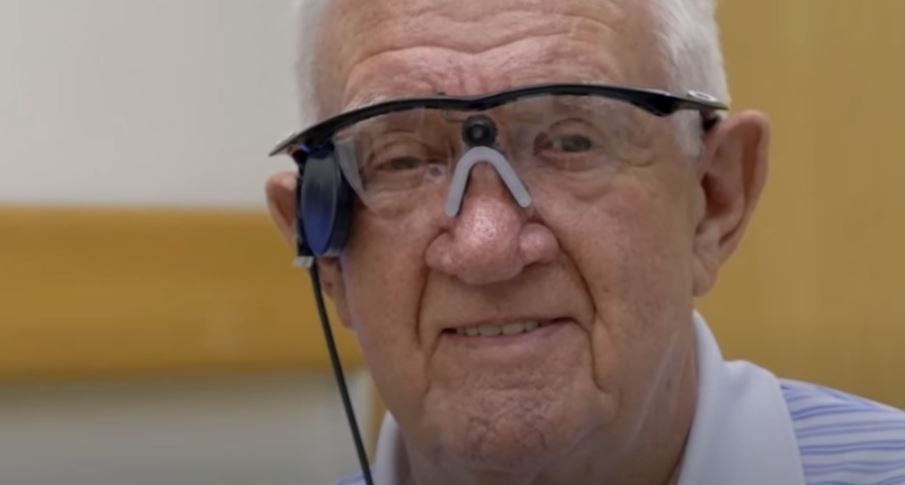Attempts to achieve a more or less realistic bionic eye have been underway for some time: restoring sight to patients who are no longer able to see, or even giving it to those who have never been able to, is one of the most challenging challenges for bionics.
The human eye is an incredibly complex piece of equipment, so it’s no wonder that researchers have had difficulty in achieving this goal, even by replicating it with reverse engineering.
Some devices, in fact, such as those of Bionic Vision Australia and those of Second Site, have already been tested on some people, and both these solutions have a shape similar to a pair of glasses with a camera in the middle.
Not exactly the best to go unnoticed, but still a big step forward to regain your sight.

How the bionic eye works
The new device that can potentially see better than the human eye has been presented on Nature.
The data from the camera inserted in the glasses is processed by a small unit worn on the outside of the body and sent to an implant connected to the user’s retina.
The received signals are then sent from there to the visual centers of the brain. The downside of these devices is that the vision is not clear enough to allow the user to rely on it to move freely around the world.
This new bionic eye is called the Electrochemical Eye or EC-Eye and is shaped on the human retina with a concave curve.
The surface has a series of tiny light sensors that mimic the photoreceptors of the human retina. The sensors are attached to a bundle of liquid metal wires that act as an optic nerve.
The artificial eye is an artificial visual system that mimics the human eye. A metal shell forms the eyeball to which a lens is attached. On the back is completed by an artificial retina, while an ionic liquid is in the middle.
Developed by Prof. FAN Zhiyong and Dr. GU Leilei of HKUST’s Department of Electronic and Computer Engineering, the team connected the nanowire light sensors to a bundle of liquid metal wires that act as nerves, and successfully replicated the transmission of the visual signal to reflect what the eye sees on the computer screen.
In the future, these nanophilic light sensors could be connected directly to the nerves of visually impaired patients, unlike a human eye, where nerve fibre optic beams transmit information to the retina through a pore from the front of the retina to the back (thus creating a blind spot in human vision) before reaching the brain. The light sensors that now spread throughout the human retina could feed the signals through the liquid metal, thus eliminating the blind spot problem.
The EC-Eye is able to capture images with relative clarity: it was placed in front of a computer screen showing some large letters and was able to display them clearly enough to be read.
In light of these results, scientists have stated that although the new EC-Eye represents a clear improvement over the existing bionic eyes, it is still far from the performance of the human eye. However, there is ample room for improvement and, in the end, the EC-Eye could see better than the real eye.
In fact, it is also possible to allow the user to perceive (and therefore see) infrared frequencies, essentially creating night vision.
This would be achieved by using different materials in some parts of the EC-Eye.
“In the next step, we plan to further improve the performance, stability and biocompatibility of our device. For the application of prosthetics, we look forward to collaborating with medical research experts who have relevant expertise in optometry and eye prosthetics.” said Prof. Fan.